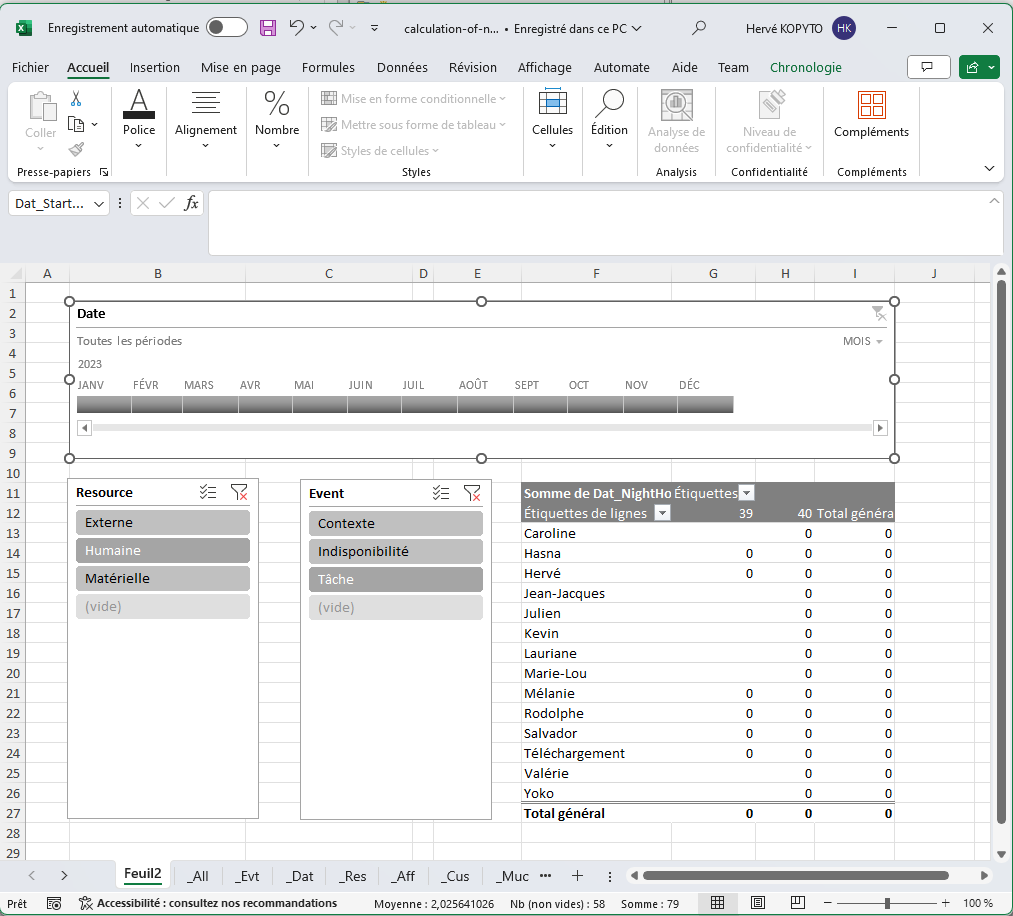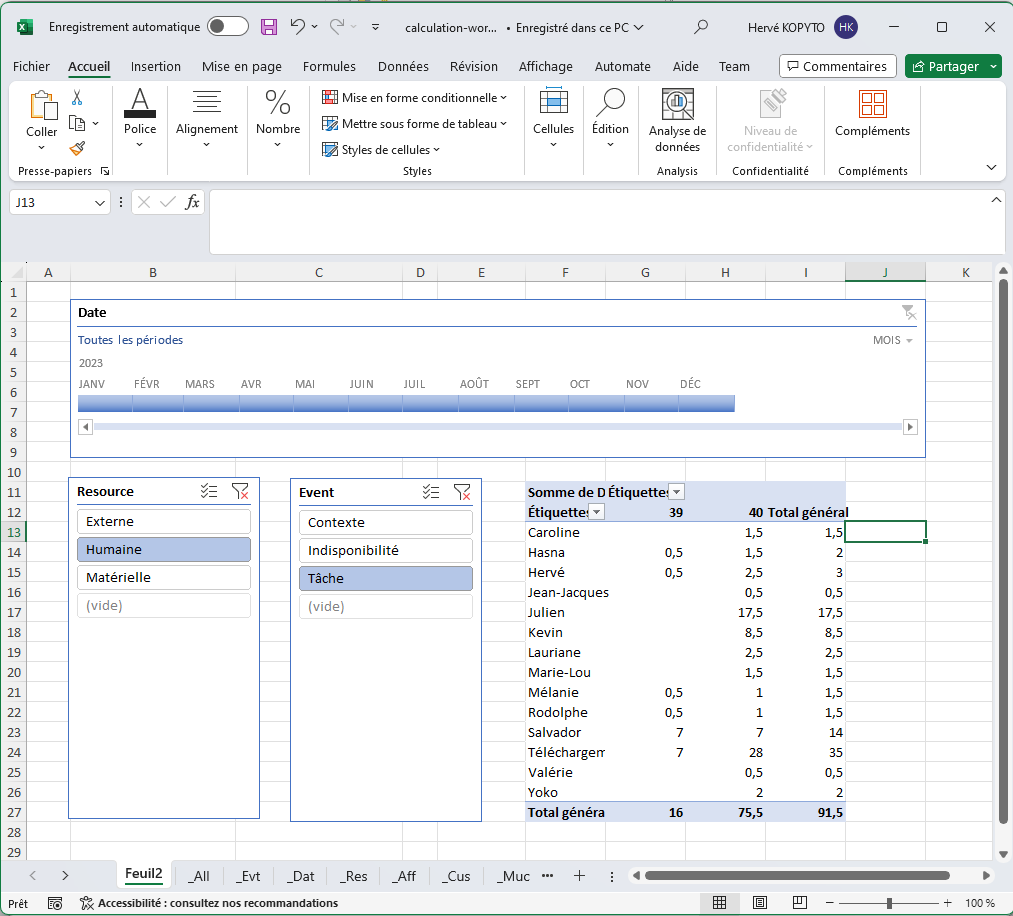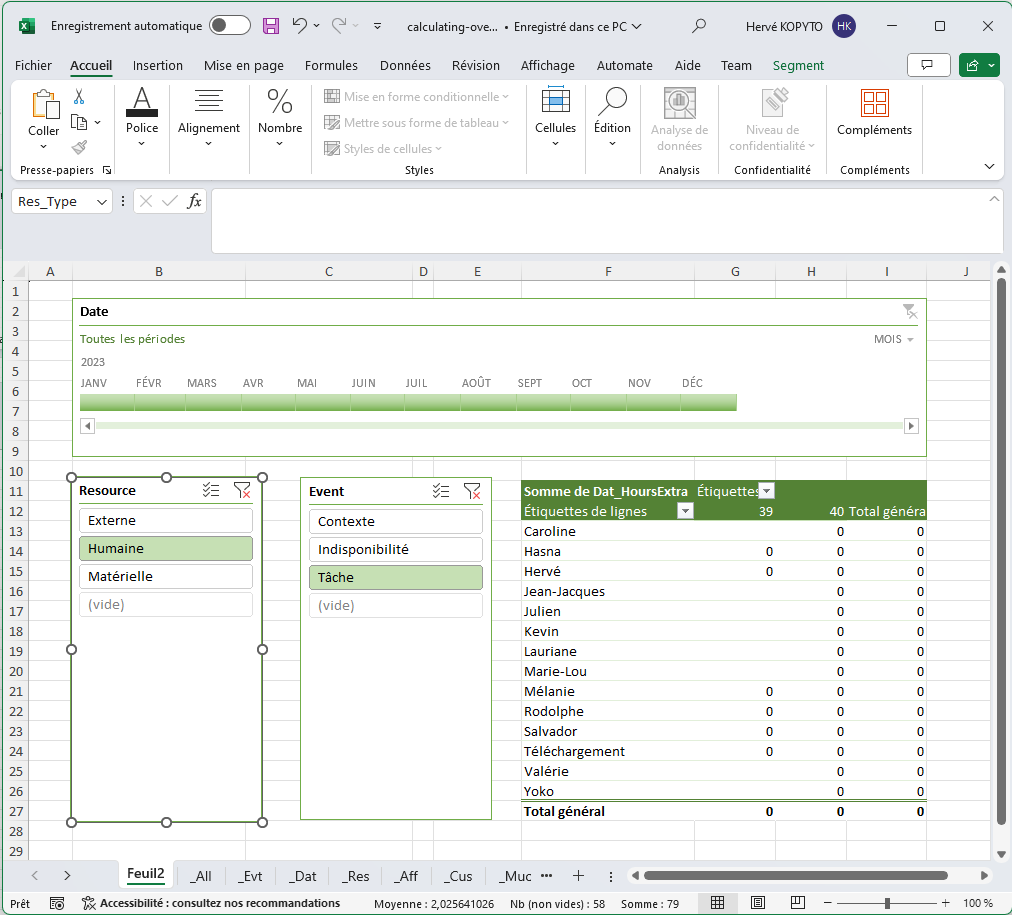Template to calculate night hours
Find out what night time is, how it is calculated, the models used and the importance of calculating night time in work organisation.
Download this Excel PivotTable template
Theme : HR Features- Put in table form
- Conditional formatting
- Timeline
- Segment
- Sum
- Night hours : Dat_NightHours
What are night hours?
Night hours are hours worked outside normal working hours, generally between 9pm and 6am. These hours are often increased because they are considered uncomfortable for workers. The purpose of night time pay is to compensate employees for work carried out during these less desirable periods.

What is a template to calculate night hours?
A timsheet for calculating night-time hours is a tool that automates the calculation process. It can be a well-structured Excel sheet, or more sophisticated software such as PlanningPME. These models often use pivot tables to organise and analyse data on hours worked.
In Excel, for example, you can set up a pivot table that filters working hours by employee and time slot, automatically calculating night hours and the corresponding mark-up.
Why use a night time calculation template?
There are several advantages to using a model to calculate night-time hours:
- Accuracy : The models reduce human error in the calculation, ensuring an accurate and fair mark-up.
- Efficiency : They save time by automating the calculation process.
- Compliance : They help maintain compliance with local employment regulations.
The night-time hours calculation model is therefore an essential tool for any company wishing to optimise its organisation of working hours.
How to calculate night hours?
The calculation of night hours may vary slightly depending on the labour legislation of the country concerned and the specific agreements of each company. However, here is a general process that can be followed to calculate night-time hours:
- Identification of night hours : First of all, identify the hours considered to be night time under local legislation or the applicable collective agreement. For example, in some jurisdictions, night-time hours are often defined as hours worked between 9pm and 6am.
- Recording time worked : Use a time tracking system to record the hours worked by each employee. It is crucial to have an accurate record of working hours for each employee, clearly indicating when they have started and finished their work.
- Calculation of night hours : Subtract the work start time from the work end time for each employee, then determine how many of these hours fall within the night time range.
- Calculation of the surcharge : Apply the rate of pay applicable to night work. The mark-up is an additional percentage that employees receive for working night hours. For example, if the premium rate is 25%, and the employee has worked 4 hours at night, he or she will receive additional pay equivalent to one hour's standard work.
- Using calculation tools : Use tools such as Excel or specific software such as PlanningPME to automate the calculation. In Excel, you can set up a pivot table to automatically calculate night-time hours and the corresponding supplement. With PlanningPME, you can configure the rules for calculating night-time hours and let the software do the calculation for you.
- Verification and compliance : Check the calculations to ensure they are accurate and that they comply with local laws and regulations and your company's policies on night-time pay.
By following these steps, you'll be able to calculate night-time hours accurately and efficiently, ensuring fair pay for your employees and compliance with legal and regulatory requirements.



